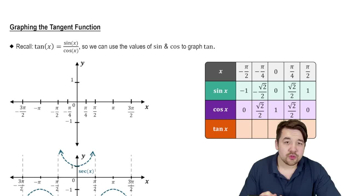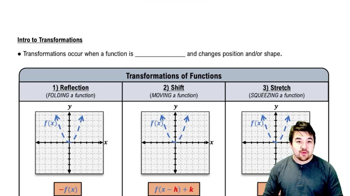Use graphing software to graph the functions specified in Exercises 31–36.
Select a viewing window that reveals the key features of the function.
Graph two periods of the function f (x) = 3 cot (x/2) + 1.
 Verified step by step guidance
Verified step by step guidance Verified video answer for a similar problem:
Verified video answer for a similar problem:



 5:53m
5:53mMaster Graph of Sine and Cosine Function with a bite sized video explanation from Patrick
Start learning